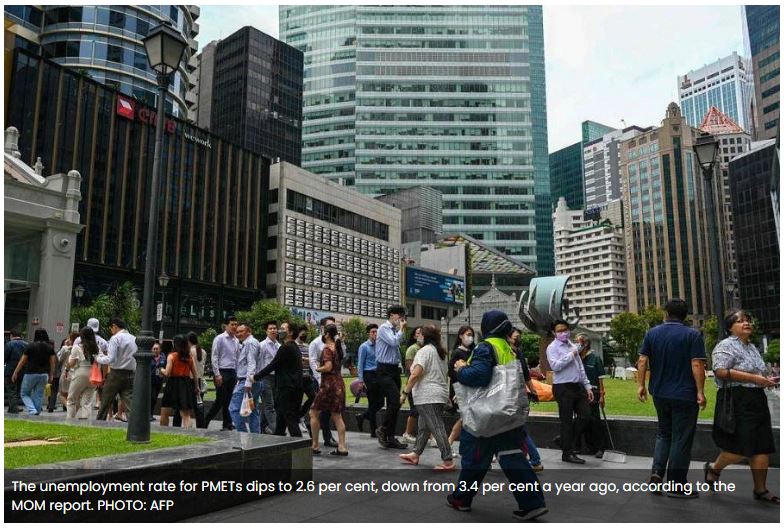Singapore residents’ real median income growth rises to 2.1% in 2022
REAL median income growth rose to 2.1 per cent in 2022, as strong nominal income growth outstripped inflation, said the Ministry of Manpower (MOM) in the advance release of its annual Labour Force in Singapore report on Thursday (Dec 1).
But this was still slower than in the pre-Covid years, when real median income growth averaged 3.8 per cent each year from 2014 to 2019, amid lower inflation.
The figures are for the year ended June and apply to Singaporeans and permanent residents. They are based on the MOM’s mid-year Comprehensive Labour Force Survey, which looks at indicators typically not covered in the ministry’s quarterly labour market reports.
Asked about the outlook for the next 12 months through June 2023, Manpower Minister Tan See Leng said he is not expecting a “significant slowdown” in real median income growth, though he noted that it is difficult to say for sure given that growth is expected to be uneven ahead.
“In the sunrise sectors, for instance in healthcare, you’ll see growth. But there’ll be some sectors where, as I said, when the froth is removed, you see some rationalisation of the salaries,” he added, referring to the tech sector, which has seen layoffs making headlines.
But this may not necessarily be a bad thing, said the minister, as it would mean wage growth in the sector would be more sustainable moving forward.
Noting that the report covers the period before all pandemic border restrictions were lifted, Ang Boon Heng, MOM’s director for manpower research and statistics, expects the momentum of wage growth to be affected by both the recovery of the economy and the return of foreign manpower.
On the outlook for the next 12 months through June 2023, he said: “Based on what we see, wage growth should still exceed inflation.”
Various labour market indicators have recovered to around pre-Covid rates or better. Singapore’s employment rate for residents was above pre-Covid levels for the second straight year, rising to 67.5 per cent in 2022, from 67.2 per cent in the previous year.
At the same time, the unemployment rate for professionals, managers, executives and technicians (PMETs) dipped to 2.6 per cent, down from 3.4 per cent a year ago. It fell to 4.4 per cent for non-PMETs, from 5.1 per cent previously.
The long-term unemployment rate also fell to around pre-Covid levels for both PMETs – 0.5 per cent, from 0.8 per cent a year before – and non-PMETs, to 0.7 per cent from 0.9 per cent before.
The number and incidence of discouraged workers – those not actively job hunting as they believe their search would not yield results – continued to fall in 2022. The group made up 0.4 per cent of the resident labour force this year, from 0.5 per cent in 2021. This reflects “a strong recovery from the height of the pandemic in 2020” when it was 0.7 per cent, said MOM.
The resident time-related underemployment rate fell to 3 per cent in 2022, below pre-Covid levels. Most groups saw improvements, said MOM, including those who were most affected at the height of the pandemic: older workers 60 years and older, as well as those with below secondary qualifications.
The proportion of workers in non-permanent employment also fell to pre-Covid levels, due to the economic recovery, the scale-back in Covid-related temporary jobs and the tight labour market.
In 2022, PMETs made up 64 per cent of all employed residents, up from 62 per cent the year before. MOM said the higher share reflects a highly educated workforce and sustained employment growth in sectors such as information and communications, financial and insurance, and professional services.
Lower-wage workers saw stronger income growth than the median worker, due to support from tripartite initiatives such as the Progressive Wage Model, said the ministry. Real income at the 20th percentile grew by 4.8 per cent, faster than in 2021 and during the pre-Covid years.
This narrowed the gap between incomes at the 20th percentile and those at the 50th percentile, with this ratio rising to 0.55 in 2022, from 0.53 previously – the highest since 2004.
MOM said the broad-based improvement in the resident labour force reflects the continued economic recovery and gradual normalisation of business and social activities.
Source: https://www.businesstimes.com.sg/singapore/singapore-residents-real-median-income-growth-rises-21-2022


 Thailand
Thailand




